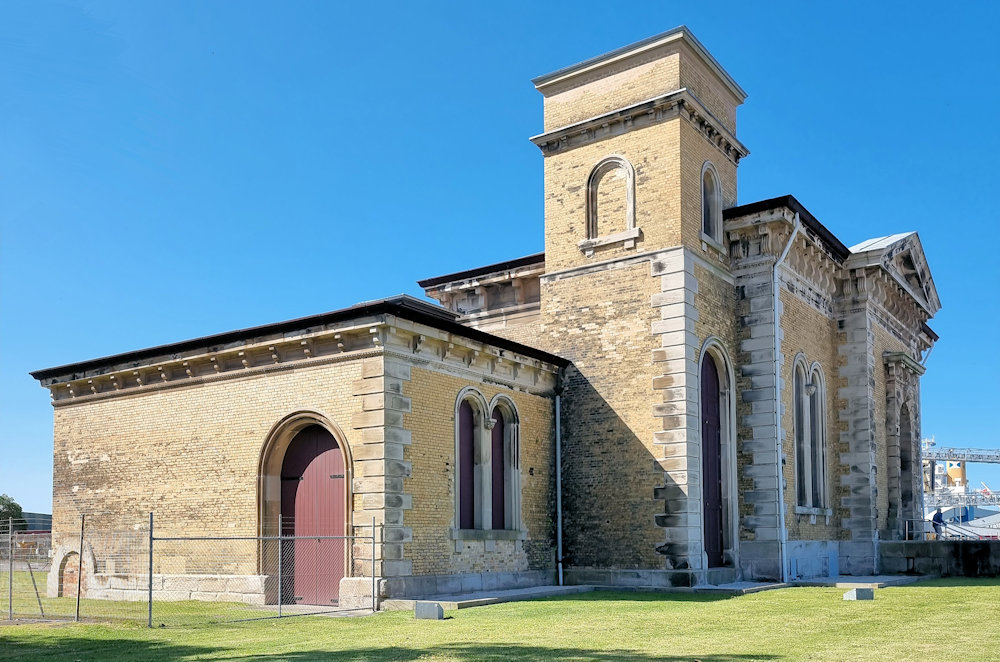Carrington Heritage Walk
The Carrington Heritage Walk showcases Carrington’s industrial legacy, architectural landmarks, and scenic landscapes. A suburb of Newcastle New South Wales Australia, Carrington retains many of its historical buildings making a walk through its streets interesting and educational. A map is available here, which allows for a self-guided tour while explaining the significance of each building.
A Historical Overview
Carrington, once referred to as “The Island,” played a pivotal role in Newcastle’s industrial and shipping development.
In the 19th century, Carrington became a hub for shipping and industry due to its strategic location along the Hunter River. The suburb’s name was derived from Lord Carrington, a Governor of New South Wales in the late 19th century. During this period, Carrington flourished, and its streets were lined with workers’ cottages, warehouses, and factories, reflecting its bustling industrial activity. The suburb was also home to wharves that supported coal loading and other maritime trades which were an integral part of Newcastle’s status as a port city.
By the 20th century, the rise and fall of industry led to changes in the area’s social and economic fabric, but Carrington’s charm and historical significance remained intact. Today, its rich heritage is preserved through its architecture.
Preservation and Restoration
Over the years, efforts have been made to preserve Carrington’s historic buildings and ensure their stories are not lost to time. Local heritage groups and government initiatives have supported the restoration of key sites, balancing modern development with the suburb’s cultural legacy. These efforts reflect a broader recognition of the importance of preserving history while fostering growth and innovation.
Historic Buildings of Carrington
Carrington is renowned for its collection of historic buildings, each telling a story of the suburb’s past. From workers’ cottages to public institutions, these structures provide a window into the early days of the suburb.
Carrington Pump House
Completed in 1878, the pump house provided hydraulic and later electrical power for cranes loading ships with coal. Decommissioned after the introduction of conveyor loading technology in the late 1960’s the building fell into disrepair. With its internal machinery removed and attendant cranes demolished, it lay abandoned but has fortunately been recently refurbished. We have more photos of the Pump House here.

Cosmopolitan Hotel
Opened in 1905, the hotel was designed by Thomas Smith, a builder, architect, Council Alderman and Mayor of Newcastle. The building, comprising 35 rooms, has unusual arched windows. It ceased trading around 1984 and has been converted for residential use.

Old Glasgow Arms Hotel
The original hotel with this name started trading in 1875 and its success led to the building being extended on both sides. It continued to trade until 1939 when the second Glasgow Arms Hotel opened across the road. The old hotel was then divided into flats and is still used for residential purposes.

Henderson’s Terrace
Five shops and houses were built for Alderman William Henderson, the owner of Wickham Timber Mill and Joinery Works. In 1890, the Carrington Post Office, Telegraph Office and Savings Bank opened in one of these terraces. Today, two terraces remain – numbers 30 and 32.

Quambi and Almora
Built in 1901 for Alderman David Murray as rental properties, these Victorian terraces feature timber lined ceilings, arched hallways, timber floors and fireplaces. Murray was a blacksmith and operated his business from premises next door to these terraces.

Everyone’s Theatre
Built with donated materials and using some volunteer labour, the theatre opened in March 1930. It continued to operate until 1962 and was then converted for use as a soap factory. In 2004 the building was renovated for use as a residential complex.

Jubilee Park
Formerly Lang Park, this area was developed in 1937 to celebrate the 50th anniversary of the incorporation of Carrington Municipality. The wooden pergola and adjacent bus shelter have carvings of native birds and marine creatures on their supports. Such food resources have sustained the Aboriginal people for thousands of years. Concrete paths in the form of a cross run from the four corners of the park and the central meeting point is marked by a rockery with a lamp post.

Modern Street Art

Fire Station
A Fire Brigade formed around 1889 and a major feature of the first station was a look-out tower built as part of the bell tower. The single-storey brick building that is used today was constructed in 1917, adjacent to the old station.

What Did We Think?
The Carrington Heritage Walk was an interesting walk around on of Newcastle’s older suburbs. The quality of the buildings ranges from poor to excellent, with most at the upper range. If you get thirsty on your walk, there are plenty of pubs to stop at (for their historical value of course).
Our photos are available for purchase on
Other Places to Visit in New South Wales
To see what else there is to do in New South Wales, click here.

Leave a Reply